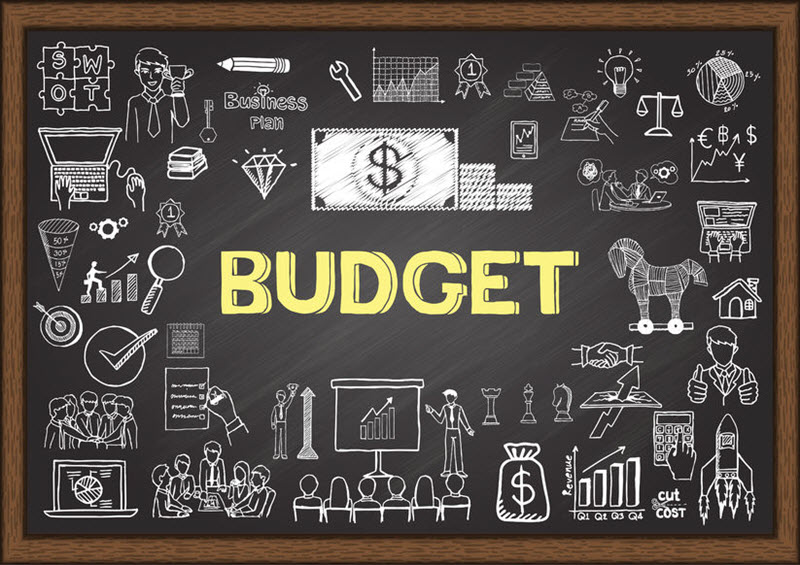Any business that isn’t planning for the future is planning to get left behind.
While most business owners know that budgeting is a critical part of their planning, there is some confusion about which components should be included in a budget.
There are three critical elements. Together, they provide the oversight you need for your business – and the key targets to work towards.
They will allow you to make informed decisions based on the reality on the ground, and realistic projections of what will happen in the future.
Just like a pilot monitors a flight plan and may need to change it according to prevailing conditions and advice received from air traffic control, your 3-way budget becomes your business’s path into the future.
Remember: what gets monitored gets managed. Budgeting is about preparing for what lies ahead. This is rarely steady and constant, so it needs to be consistently monitored and forecasts managed according to the reality.
This will help you gain an edge over the many businesses out there that are not so agile or prepared for what’s around the corner.
Here’s what your 3-way budget should include:
Profit and Loss
Budgets should begin with a detailed look at your Profit and Loss. What are the costs and revenue-drivers in your business? When these change, what is the impact? How many existing customers do you have and what is the average invoice value, for instance?
Use past and present information from your Xero file to work out your anticipated profit for the next 12 months; and be aware of industry changes that might affect the business.
NOTE: Profitable businesses can go broke! When budgets are solely designed as profit and loss predictions, potential problems can be overlooked; alone, the projected profitability of your business doesn’t consider managing growth and it won’t help you avoid cash flow problems.
There’s a saying, “Profit is theory, cash is fact,” which leads us to the second element of your three-way forecast…
Cashflow Forecast
One of the main reasons that small businesses fail is poor cash flow management.
As already noted, it is possible to make a good profit but not have enough cash in the bank account to pay bills or repay loans.
Unless the profit is converted to cash in your bank account (e.g. you are invoicing regularly, customers are paying you promptly for services delivered, and your money is not tied up in stock), you may be at risk of insolvency. After all, you pay staff and bills with cash—the money in your bank account—not with the profit figure that appears on a Profit & Loss.
So cash really is the ‘life blood’ of a business. By adding a cash flow forecast element to your budget, you create more consistency in your business. You will make it more ‘future-proof’ and be better equipped to ride things out when cash flow hits harder times. You are prepared and can take corrective measures in the business before a full-blown crisis develops.
Planning ahead for the timing of your likely cash inflows and outflows allows you to identify the need for a capital injection, an increase in credit or to boost your cash flow in some other way.
Balance Sheet
A Balance Sheet provides a projected statement of assets, liabilities and owners’ or shareholders’ equity and is the final piece of your 3-way budget jigsaw. A simple way of describing what your Balance Sheet summarises is: what does the business own (its assets), what does it owe (its liabilities) and what’s the difference in those amounts, which is the equity.
You may have heard the phrase, “a healthy balance sheet.” This refers to a Balance Sheet where the assets well exceed the liabilities and the business is able to comfortably meet its obligations.
It’s important to track the health of your Balance Sheet because looking only at your revenue and cash flow and not taking into account your level of liabilities would be like only caring about how many goals your team scores, and not keeping an eye on how many goals are scored against you. The “for and against” ratio matters in business, just as it does in sport.
The three parts of your three-way budget complement each other. Together, they provide a complete picture of the financial health of your business AND your future targets on three fronts:
- Your anticipated profit;
- How much cash should be sitting in your bank account;
- What the net worth of your business will be.
How often should you revisit your 3-way budget?
The purpose of your 3-way budget is to try to realistically predict future numbers and to give you targets to work towards.
You may not get this right immediately. In fact, it’s likely that you’ll need to revisit it multiple times before you become adept at accurate forecasting.
Even then, things change. So it’s a good idea to review the budget on a monthly or, at least, quarterly basis.
You’ll need to recognise and interpret differences between actual and forecast results, and decide on actions to keep your business on track.
In business it can often become a case of ‘not being able to see the forest for the trees,’ where you get caught up in the day-to-day operational details of your business, and lose sight of the bigger picture and how your business is travelling compared with expectations.
That’s where it pays to have an independent advisor like us help you:
- Create your 3-way forecast,
- Monitor and update your 3-way forecast with your actual results, and
- Discuss with you ways of keeping your business’ performance on track.
Just as any sport involves players, coaches and scorekeepers, so does business. You and your team are the players in the heat of the battle, and you need not just independent scorekeepers but also the support and guidance of an experienced coach.
That’s where we come in for you, as that support.
Are you prepared for the future?
What happens if your circumstances change? If costs go up or sales and revenue goes down?
Changing circumstances are a given in any business. While it’s impossible to predict the future, it’s how you react to change that will ultimately determine the success or failure of your business.
Rather than simply estimating figures based on last year’s numbers plus a few percent growth, put work into a three-way budget. This will help you take the necessary action and adjust your business practices according to actual results and future changes.
This type of budget will provide a full overview of the impact on your business and you’ll be in a position to make informed decisions based on this new ‘reality’. It may even help you to receive financial backing from banks or investors.
You will be able to pre-empt any number of scenarios and assess where your business can improve, avert problems before they develop into crises, and take advantage of growth opportunities that arise.
This is the real power of the three-way budget. Implement it in your business and see what a difference it makes to your decision-making, motivation levels, performance, and ultimate success.
To find out how your business is tracking, take our Business Health Check.



